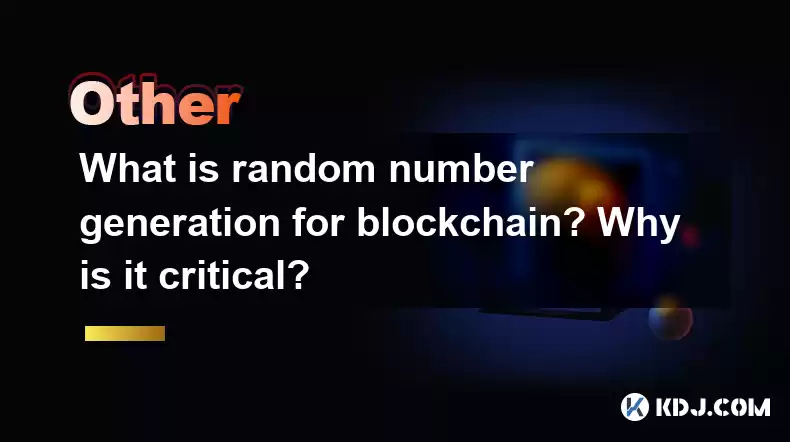-
 Bitcoin
Bitcoin $113900
-1.39% -
 Ethereum
Ethereum $3517
-4.15% -
 XRP
XRP $3.009
1.59% -
 Tether USDt
Tether USDt $0.9997
-0.04% -
 BNB
BNB $766.8
-1.41% -
 Solana
Solana $164.6
-2.38% -
 USDC
USDC $0.9998
-0.02% -
 TRON
TRON $0.3277
0.65% -
 Dogecoin
Dogecoin $0.2023
-1.67% -
 Cardano
Cardano $0.7246
0.05% -
 Hyperliquid
Hyperliquid $38.27
-4.77% -
 Sui
Sui $3.528
-0.52% -
 Stellar
Stellar $0.3890
-0.73% -
 Chainlink
Chainlink $16.16
-2.69% -
 Bitcoin Cash
Bitcoin Cash $539.9
-4.38% -
 Hedera
Hedera $0.2425
-2.00% -
 Avalanche
Avalanche $21.71
-0.97% -
 Toncoin
Toncoin $3.662
5.73% -
 Ethena USDe
Ethena USDe $1.000
-0.02% -
 UNUS SED LEO
UNUS SED LEO $8.964
0.35% -
 Litecoin
Litecoin $107.7
2.33% -
 Shiba Inu
Shiba Inu $0.00001223
-0.40% -
 Polkadot
Polkadot $3.617
-0.97% -
 Uniswap
Uniswap $9.052
-2.49% -
 Monero
Monero $295.1
-3.79% -
 Dai
Dai $0.9999
0.00% -
 Bitget Token
Bitget Token $4.315
-1.85% -
 Pepe
Pepe $0.00001060
0.11% -
 Cronos
Cronos $0.1342
-2.72% -
 Aave
Aave $256.0
-0.87%
What is random number generation for blockchain? Why is it critical?
Random number generation is vital for blockchain security, fairness, and unpredictability, used in key generation, unique addresses, and consensus mechanisms like proof-of-stake.
Apr 27, 2025 at 09:07 pm

Random number generation (RNG) in the context of blockchain technology is a crucial component that plays a significant role in ensuring the security, fairness, and unpredictability of various blockchain operations. RNG is used in a variety of applications within the blockchain ecosystem, such as generating cryptographic keys, creating unique addresses, and facilitating consensus mechanisms like proof-of-stake. This article will delve into what random number generation is for blockchain, why it is critical, and how it is implemented.
What is Random Number Generation in Blockchain?
Random number generation in blockchain refers to the process of generating sequences of numbers or symbols that cannot be reasonably predicted better than by random chance. These numbers are essential for various cryptographic functions and for maintaining the integrity of the blockchain. In blockchain, RNG is used to:
- Generate cryptographic keys: These keys are used to secure transactions and ensure that only the intended recipients can access the data.
- Create unique addresses: Each blockchain address needs to be unique to prevent confusion and ensure that funds are sent to the correct destination.
- Facilitate consensus mechanisms: In proof-of-stake systems, for example, random numbers can be used to select validators in a fair and unpredictable manner.
Why is Random Number Generation Critical for Blockchain?
Random number generation is critical for blockchain for several reasons:
- Security: The unpredictability of random numbers is vital for cryptographic security. If an attacker can predict the random numbers used in cryptographic operations, they could potentially compromise the security of the blockchain.
- Fairness: In decentralized systems, ensuring that all participants have an equal chance of being selected for tasks like block validation is crucial. Random number generation helps maintain this fairness.
- Unpredictability: The unpredictability of random numbers is essential for preventing manipulation and ensuring the integrity of the blockchain. If the random numbers were predictable, malicious actors could exploit this to gain an unfair advantage.
Types of Random Number Generators Used in Blockchain
There are several types of random number generators used in blockchain, each with its own strengths and weaknesses:
- Pseudorandom Number Generators (PRNGs): These are algorithms that use a seed value to generate a sequence of numbers that appear random. While they are fast and efficient, they are deterministic, meaning that if the seed is known, the entire sequence can be predicted.
- True Random Number Generators (TRNGs): These generators use physical phenomena, such as thermal noise or radioactive decay, to generate truly random numbers. They are more secure than PRNGs but can be slower and more complex to implement.
- Hybrid Random Number Generators: These combine the efficiency of PRNGs with the security of TRNGs. They use TRNGs to periodically reseed PRNGs, ensuring both speed and security.
Implementation of Random Number Generation in Blockchain
Implementing random number generation in blockchain involves several steps and considerations:
- Choosing the Right RNG: Depending on the specific requirements of the blockchain, developers must choose between PRNGs, TRNGs, or hybrid systems. For example, a blockchain that prioritizes speed might opt for a PRNG, while one that prioritizes security might choose a TRNG.
- Ensuring Unpredictability: To ensure the unpredictability of the random numbers, developers must use techniques such as hashing and encryption. For example, a blockchain might use a hash function to combine multiple sources of randomness, making it harder for attackers to predict the outcome.
- Verifying Randomness: It is crucial to have mechanisms in place to verify the randomness of the generated numbers. This can be done through audits and testing, as well as through consensus mechanisms that allow multiple parties to validate the randomness.
Examples of Random Number Generation in Blockchain
Several blockchain projects have implemented random number generation in innovative ways:
- Ethereum: Ethereum uses a combination of block hashes and transaction data to generate random numbers for its smart contracts. This approach ensures that the random numbers are unpredictable and verifiable by all participants in the network.
- Algorand: Algorand uses a verifiable random function (VRF) to select validators in its proof-of-stake consensus mechanism. The VRF ensures that the selection process is both random and verifiable, preventing manipulation.
- Chainlink: Chainlink provides a decentralized oracle network that can be used to generate random numbers for blockchain applications. By aggregating data from multiple sources, Chainlink ensures that the random numbers are both secure and reliable.
Challenges and Solutions in Random Number Generation for Blockchain
Despite its importance, random number generation in blockchain faces several challenges:
- Predictability: Ensuring that random numbers are truly unpredictable is a significant challenge. Solutions include using multiple sources of randomness and implementing cryptographic techniques to enhance unpredictability.
- Scalability: Generating random numbers in a decentralized system can be resource-intensive. Solutions include using efficient algorithms and optimizing the random number generation process to handle large-scale operations.
- Verification: Verifying the randomness of generated numbers is crucial for maintaining trust in the system. Solutions include implementing consensus mechanisms and using third-party audits to ensure the integrity of the random numbers.
Frequently Asked Questions
Q: Can random number generation be manipulated in blockchain?
A: While random number generation is designed to be unpredictable, it is not immune to manipulation. Malicious actors could attempt to influence the random number generation process by controlling the input data or exploiting vulnerabilities in the algorithms. However, robust blockchain systems implement multiple layers of security and verification to minimize the risk of manipulation.
Q: How does random number generation affect the performance of a blockchain?
A: Random number generation can impact the performance of a blockchain, particularly in terms of speed and resource usage. Efficient algorithms and optimized processes are essential to ensure that random number generation does not become a bottleneck in the system. Additionally, the choice between PRNGs and TRNGs can affect performance, with PRNGs generally being faster but less secure than TRNGs.
Q: Are there any alternatives to random number generation in blockchain?
A: While random number generation is widely used in blockchain, there are alternative approaches for certain applications. For example, some consensus mechanisms use deterministic algorithms to select validators, although these are less common due to the potential for manipulation. Additionally, some blockchain projects use external oracles to provide randomness, although this introduces new security considerations.
Q: How can users verify the randomness of numbers generated in a blockchain?
A: Users can verify the randomness of numbers generated in a blockchain through several methods. One approach is to use consensus mechanisms that allow multiple parties to validate the randomness. Another method is to conduct third-party audits and testing to ensure the integrity of the random numbers. Additionally, some blockchain projects provide transparency tools that allow users to inspect the random number generation process and verify its unpredictability.
Disclaimer:info@kdj.com
The information provided is not trading advice. kdj.com does not assume any responsibility for any investments made based on the information provided in this article. Cryptocurrencies are highly volatile and it is highly recommended that you invest with caution after thorough research!
If you believe that the content used on this website infringes your copyright, please contact us immediately (info@kdj.com) and we will delete it promptly.
- Bitcoin Strategy: Saylor's Not Hoarding, He's Building an Empire
- 2025-08-02 22:30:12
- Bitcoin Bloodbath: Macro Pressures and Liquidations Unleash Crypto Chaos
- 2025-08-02 22:30:12
- Tron, Cold Wallets, and Crypto Trends: What's Hot in the Market?
- 2025-08-02 23:10:12
- Bitcoin's Wild Ride: Davinci, Investors, and the $500K Dream
- 2025-08-02 23:50:12
- Worldcoin, Identity, WLD Price: Decoding the NYC Crypto Buzz
- 2025-08-02 21:10:12
- Shiba Inu: Utility and Community Strength Drive Crypto's Evolution
- 2025-08-02 21:50:12
Related knowledge

What is the difference between on-chain and off-chain transactions?
Aug 02,2025 at 04:22pm
Understanding On-Chain TransactionsOn-chain transactions refer to digital asset transfers that are recorded directly on a blockchain ledger. These tra...

What is the double-spending problem and how does blockchain prevent it?
Aug 02,2025 at 01:07pm
Understanding the Double-Spending ProblemThe double-spending problem is a fundamental challenge in digital currency systems where the same digital tok...

What is the difference between a blockchain and a database?
Aug 01,2025 at 09:36pm
Understanding the Core Structure of a BlockchainA blockchain is a decentralized digital ledger that records data in a series of immutable blocks linke...

How does blockchain handle scalability?
Aug 02,2025 at 02:58pm
Understanding Blockchain Scalability ChallengesBlockchain scalability refers to a network's ability to handle an increasing volume of transactions wit...

What is a hash in a blockchain?
Aug 02,2025 at 05:28am
Understanding the Concept of Hash in BlockchainA hash in the context of blockchain technology refers to a unique digital fingerprint generated by a cr...

What is a hash in a blockchain?
Aug 02,2025 at 04:43am
Understanding the Concept of Hash in BlockchainA hash in the context of blockchain technology refers to a unique digital fingerprint generated by a cr...

What is the difference between on-chain and off-chain transactions?
Aug 02,2025 at 04:22pm
Understanding On-Chain TransactionsOn-chain transactions refer to digital asset transfers that are recorded directly on a blockchain ledger. These tra...

What is the double-spending problem and how does blockchain prevent it?
Aug 02,2025 at 01:07pm
Understanding the Double-Spending ProblemThe double-spending problem is a fundamental challenge in digital currency systems where the same digital tok...

What is the difference between a blockchain and a database?
Aug 01,2025 at 09:36pm
Understanding the Core Structure of a BlockchainA blockchain is a decentralized digital ledger that records data in a series of immutable blocks linke...

How does blockchain handle scalability?
Aug 02,2025 at 02:58pm
Understanding Blockchain Scalability ChallengesBlockchain scalability refers to a network's ability to handle an increasing volume of transactions wit...

What is a hash in a blockchain?
Aug 02,2025 at 05:28am
Understanding the Concept of Hash in BlockchainA hash in the context of blockchain technology refers to a unique digital fingerprint generated by a cr...

What is a hash in a blockchain?
Aug 02,2025 at 04:43am
Understanding the Concept of Hash in BlockchainA hash in the context of blockchain technology refers to a unique digital fingerprint generated by a cr...
See all articles

























































































